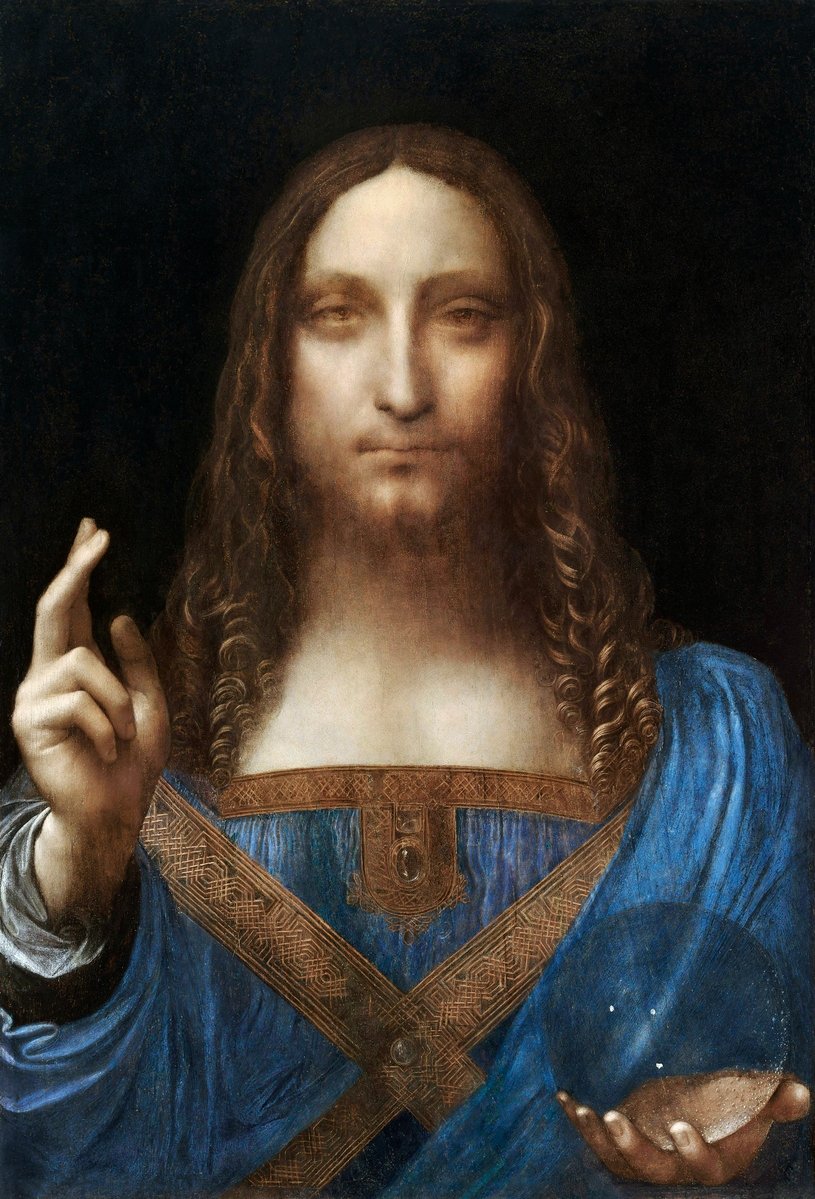From Brushstrokes to Dollar Signs: How an Art Appraiser Evaluates the Worth of Your Art
What does an art appraiser do?
Are you curious about the value of that painting you inherited from your great-aunt? What is your collection of sculptures worth? When it comes to evaluating the worth of your art, an art appraiser is the expert you need.
In this article, we will explore the intriguing world of art appraisal and learn how these professionals determine the value of artwork. With their trained eyes and vast knowledge of the art market, art appraisers take into account various factors, such as the artist's reputation, the condition of the artwork, and current market trends.
By understanding the methods used by art appraisers, you'll be better equipped to make informed decisions about buying, selling, or insuring your artwork. Whether you're an artist curious about the potential value of your work or an art enthusiast looking to expand your collection, this article will provide valuable insights into the appraisal process.
Discover the fascinating intersection of art and commerce as we delve into the world of art appraisals and uncover the secrets behind determining the worth of your art.
The role of an art appraiser
Art appraisers determine the value of artwork. They are highly trained professionals who deeply understand the art market and its intricacies. Their expertise allows them to evaluate and assess the worth of various art forms, including paintings, sculptures, and even digital art.
Art appraisers consider a range of factors when evaluating artwork. One of the most significant factors is the artist's reputation. Well-known artists with a strong market presence often command higher prices for their work. The reputation of the artist can be influenced by factors such as their artistic style, previous sales records, and critical acclaim.
Additionally, the condition of the artwork plays a vital role in its value. Art appraisers carefully examine the piece for any signs of damage, restoration, or wear. The better the condition, the higher the value of the artwork. They also take into account the rarity and uniqueness of the piece, as well as its historical significance, if applicable.
Factors that influence the value of artwork
Understanding the factors that influence the value of artwork can provide valuable insights into the appraisal process. Art appraisers take into account a combination of objective and subjective factors when evaluating the worth of art.
As mentioned earlier, one of the most critical objective factors is the artist's reputation. Artists who have established themselves in art through exhibitions, awards, and critical acclaim often have higher-valued artwork. The demand for their work drives up the prices.
Another objective factor is the condition of the artwork. Art appraisers carefully inspect the piece for any signs of damage, deterioration, or restoration. The better the condition, the higher the value. However, they also consider the age and patina of certain art forms, such as antique paintings, where signs of age can add to their value.
Subjective factors also come into play when evaluating artwork. These factors include the piece's aesthetic appeal, its emotional impact on viewers, and the overall quality of the composition. Art appraisers rely on their trained eyes and extensive knowledge of art history to assess these subjective elements.
Understanding art market trends
The art market is a dynamic and ever-changing landscape. Art appraisers must stay up-to-date with current market trends to accurately value artwork. Understanding market trends involves analyzing factors such as the demand for certain art styles, the popularity of specific artists, and the overall economic climate.
Art appraisers often rely on market data, auction records, and sales history to gauge the market value of artwork. They closely monitor art sales, exhibitions, and art fairs to track emerging trends and fluctuations in prices. They can provide accurate and reliable appraisals by staying informed about market dynamics.
It's worth noting that market trends can vary across different art genres and regions. For example, Old Master paintings might be in high demand in one part of the world, while ultra-contemporary art is sought after in another. Art appraisers take these variations into account when evaluating the worth of artwork.
The appraisal process
The appraisal process is a meticulous and systematic approach to evaluating the worth of artwork. Art appraisers follow a series of steps to ensure an accurate and comprehensive appraisal.
Usually, the first step of an appraisal is the inspection, when art appraisers physically examine the artwork. They carefully inspect the piece for any signs of damage, restoration, or wear. They also analyze the materials used, the technique employed, and the overall quality of the composition. This close examination allows them to assess the condition and authenticity of the artwork.
Following the inspection is the research stage, in which the appraiser dives into the piece’s background and provenance. Provenance is the history of ownership and documentation of the piece. Appraisers are not authenticators; however, in order to provide accurate and trustworthy valuations, appraisers must conduct due diligence. Art appraisers will research the artwork and gather any relevant documentation, such as certificates of authenticity, exhibition records, and previous sales records.
Finally, art appraisers conduct extensive research to gather relevant market data. They analyze recent sales of comparable artwork and consider factors such as the artist's reputation, the piece's rarity, and the demand in the art market. This research provides a context for evaluating the worth of the artwork.
Researching and analyzing artwork
Researching and analyzing artwork is a crucial part of the appraisal process. Art appraisers delve into the history of the artwork, the artist, and the art movement to better understand its significance and value.
They explore the artist's background, including their education, training, and artistic influences. They also consider the art movement or style the artwork belongs to and its historical context. This research allows art appraisers to assess the artwork's place within the broader art world and determine its value accordingly.
Analyzing the artwork itself involves a detailed examination of its physical attributes. Art appraisers closely study the composition, color palette, brushwork, and overall technique employed by the artist. They consider the quality of craftsmanship and the level of skill demonstrated in the artwork. These factors contribute to the overall value and aesthetic appeal of the piece.
Appraisal methods and approaches
Art appraisers employ various methods and approaches to determine the worth of artwork. These methods depend on the type of artwork being appraised, its historical significance, and the purpose of the appraisal.
One commonly used method is the sales comparison approach. This approach involves comparing the artwork to similar recently sold pieces. Art appraisers consider factors such as the artist, medium, size, condition, and provenance to determine a fair market value.
Another approach is the cost approach, which considers the materials and labor involved in creating the artwork. This approach is often used for appraising commissioned pieces or artworks with significant material value, such as sculptures made of expensive materials. The cost approach can also be used when determining the replacement value. Replacement Value, is the amount it would cost to replace an item with another having similar qualities within a reasonable amount of time in the relevant marketplace.
The importance of provenance and documentation
Provenance and documentation play a vital role in the appraisal process. Provenance refers to the history of ownership and documentation of the artwork, including any relevant certificates, exhibition records, or sales records.
Art appraisers rely on provenance to establish the authenticity and legitimacy of the artwork. It provides a clear chain of ownership and can support the value of the piece. Artwork with well-documented provenance can be more valuable and desirable in the art market.
Documentation, such as certificates of authenticity and exhibition records, provides additional evidence of the artwork's value and historical significance. It helps art appraisers assess the reputation of the artist, previous exhibitions, and any critical acclaim received. This information adds credibility and value to the artwork.
Common misconceptions about art appraisal
There are several common misconceptions about art appraisal that need to be clarified. One misconception is that art appraisers solely rely on their personal opinions or subjective judgment when determining the worth of artwork. Art appraisers follow a rigorous and objective appraisal process based on the Uniform Standards of Appraisal Practice (USPAP) and verified data.
Another misconception is that art appraisers are solely focused on monetary value. While determining the financial worth of artwork is an important aspect of their role, art appraisers also consider the cultural and historical significance of the artwork. They appreciate the artistic value and contribution of the piece within the broader art world.
It's also important to note that art appraisers are not art dealers or brokers. Their primary role is to provide an unbiased evaluation of the worth of artwork based on their expertise and knowledge of the art market. They do not buy or sell artwork directly but can provide guidance on the best course of action for buying, selling, or insuring artwork.
Why hiring an art appraiser is essential for determining the worth of your art
Determining the worth of artwork can be a complex and nuanced process. Hiring an art appraiser is essential to ensure an accurate and comprehensive evaluation of your art's value.
Art appraisers bring their expertise, knowledge, and trained eyes to the table, allowing them to assess the worth of artwork based on objective and subjective factors. They consider the artist's reputation, the condition of the artwork, and current market trends to provide a reliable appraisal.
Whether you're an artist curious about the potential value of your work or an art enthusiast looking to expand your collection, consulting an art appraiser can provide valuable insights and guidance. Their expertise can help you make informed decisions about buying, selling, or insuring your artwork in the ever-evolving art market.
We can help!
Lindsey Owen is a Certified Appraiser of Personal Property through the International Society of Appraisers.
Follow the button below to start your appraisal project.










